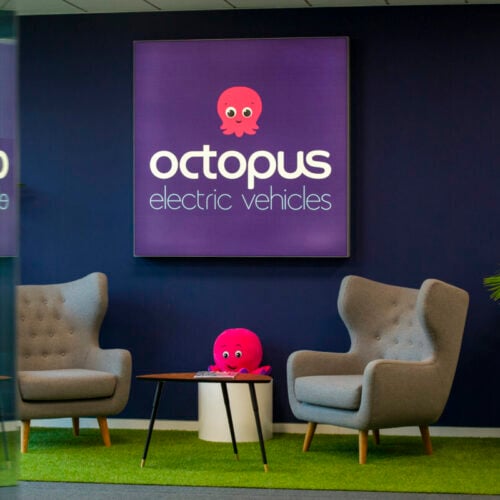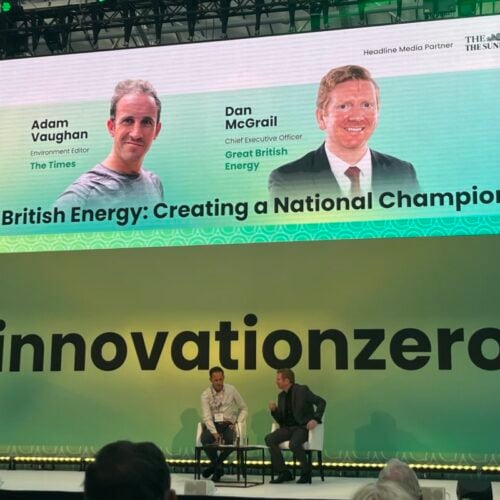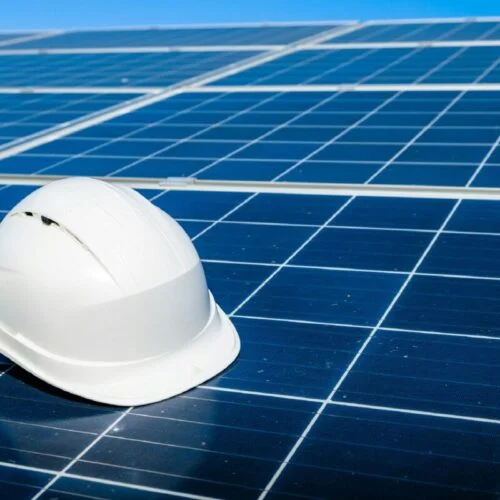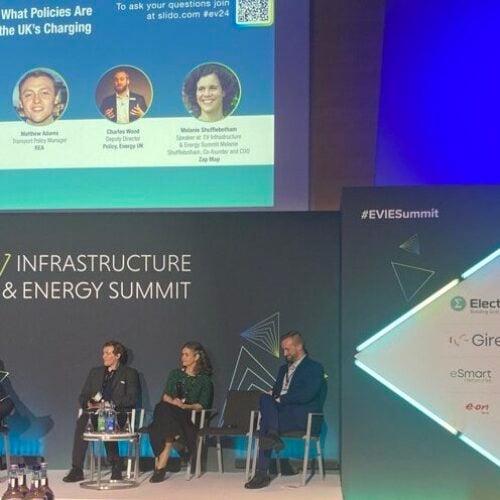Current± sat down with Marc Beaumont, head of sustainability at Hull University Teaching Hospitals NHS Trust to discuss its hospitals’ present and future journey to net zero, and how external organisations can help decarbonise the wider NHS.
In November 2021, Hull University Teaching Hospitals NHS Trust, which operates the Castle Hill Hospital and Hull Royal Infirmary sites, published its ambitious ZeroThirty strategy and Green Plan to reach net zero by 2030 – preceding the wider NHS’ target by 10 years.
Hull hospitals have already completed a number of renewable projects including replacing gas boilers with heat pumps at their sites and the £4.5 million photovoltaic (PV) flagship project – located on land adjacent to the Castle Hill Hospital site in Cottingham comprised of 11,000 solar panels – dubbed ‘Field of Dreams’. These projects have already seen considerable success. In May last year for example, the Hull Trust announced that Castle Hill Hospital was now solely powered by energy generated by the project.
What inspired Hull’s pledge for net zero by 2030, a decade earlier than the NHS?
Climate change is the greatest threat to healthcare in the 21st century and we felt if we can do something, we should strive to make a change as soon as possible. Net zero by 2040 is a good target, but I think the urgency of a 2030 target can inspire people to deliver and illustrates how pressing this issue is.
It was an agreement as a group at Hull University Teaching Hospitals that we should pick 2030 as our target.
We felt it was a really important agenda that we needed to address. Hull has experienced the impacts of climate change in extreme weather events in the past, such as floods. A whole 90% of Hull sits below the high tide line, so there’s a real risk of sea level rise for Hull.
We also felt that, as a large employer in the local area, we should be setting an example and we have the opportunity, not only to set that example, but to influence. We’ve got an awful lot of companies and organisations that we employ, both directly and indirectly, that we can help bring along on that journey.
Could you tell me a little about the ‘Field of Dreams’ project and how commonly funding grants for decarbonisation are received by the NHS?
The funding for those projects came from the Public Sector Decarbonisation Scheme (PSDS) which is funded by the Department for Business, Energy and Industrial Strategy (BEIS). We were successful in phase one of the funding, and received £12.6 million. That money enabled us to do schemes like the ‘Field of Dreams’. This meant we didn’t require the same business case as it wasn’t internal capital funding.
At the moment the PSDS’ have been annual but the value of the funding pot changes. It’s always been for the public sector, so it encompasses universities, local councils, etc. In the last funding round, which was 3B, it was split up into particular chunks for each area such as the NHS, local councils etc.
Previously, everyone would bid into this pot on a first come first serve basis but because of the significant number of applicants, it’s now been split into pots so that the funding splits over the sectors. There’s no guarantee that it will be there but it has been for the last few years.
As people become more aware of it, competition is increasing for that funding. Obviously everyone in the public sector has targets to achieve to decarbonise their estates and for a lot of organisations capital is a real challenge, particularly in funding these types of projects. So, I think everyone sees the PSDS as a key way to try and help deliver these things.
What other renewable projects has Hull University Teaching Hospitals been working on?
We’ve also done work to reduce anaesthetic gases because, as an acute trust, our second highest area of emissions comes from anaesthetic gases.
This includes Entonox, which is used in pain relief especially in labour wards, as well as anaesthetic gases that are used during surgical procedures. So we did quite a bit of work reducing them.
By carrying out an audit, and making some changes to a process with the midwives, we delivered a massive reduction which has on its own reduced our carbon emissions by 3,500 tonnes a year. We also managed to reduce emissions from Entonox by 87%.
We have also recently installed a large four pipe heat pump system, which does both heating and cooling for a big central section of one of our sites. They’re quite clever in that the heat that it’s rejecting from one side of the system, it’ll put into the other side of the system. So because we have surgeries, they need cooling all of the time, so there’s always a demand for cooling even in the winter, whereas other areas have a demand for heating during the winter. So it allows them to the work quite efficiently there and use more of the capacity of the plant that’s installed. That was only commissioned recently and is running quite well.
What benefits have Hull University Teaching Hospitals NHS experienced since making renewable upgrades?
There’s been significant cost savings with all of these schemes. At first, we expected the PV farm to save us around £450,000 to £500,000 a year, as it’s turned out, because of the current state of the energy market and inflation, we are now saving over a million pounds. So that’s a really strong payback with the current market conditions.
One of the biggest benefits of the PV, I think, is that it’s a really visual scheme and it gets people talking. It gives us a platform to be able to talk about the other work that we’re doing, and about other things that individuals can do. So although the conversation might start around the PV, it can give us the opportunity to then discuss what can you do about how you travel to work, about what you’re doing in your work environment, as well as efficiencies in consumables that we purchase for use in theatres. So I think that’s been a really nice, additional benefit of the PV being there, that it’s enabled more conversations to be had around other areas where people can have impacts.
The Entonox work again, required a very low capital investment that saved us another £40,000. So I think the vast majority of these schemes will deliver good financial payback, particularly in the current state of the energy market.
The heat pumps provide a good carbon saving because we move into a renewable source of power, so it’s either been fed from our PV or our grid supplied power which is all renewable as well. We’re still doing the cost modelling, to see where heat pumps end up in terms of the cost benefit between a gas boiler and electrical boiler but, gas boilers don’t allow us to decarbonise , so we know we’ve got to move across to electrical heating, to be able to decarbonise the trust. That’s where all of our plans are now headed.
Are there further renewable upgrades in the pipeline for Hull University Teaching Hospitals in 2023?
Subject to funding, yes. We’ve put new bids into the last PSDS funding round and we’re waiting for final decisions on what’s happening with those. We would like to increase our PV further, that’s been really successful for us and we’re really fortunate that we have places where we can install more PV on both of our sites.
We’d also like to look at storage technologies, both thermal and battery. For us, because our estate ranges from buildings that are roughly 120 years old to recently built, it’s all about reducing our heat demand by improving our building fabric and moving away from gas. Switching from fossil fuel fired heating to electric heating is a key driver of that. We also consider how to provide for that heating source by generating as much of our own power as we can. And then, how do we utilise as much of that self-generation as possible, through battery storage or thermal storage.
Thermal storage is something I’m quite interested to look at. This isn’t a plan, but it’s definitely something that we’re keen on, because thermal storage generally is a lot more cost effective to purchase than electrical storage. A good chunk of the power that we would be storing, would then be converted to provide heating, so for us thermal storage is a lower cost option and has a good benefit. We still need to store power as well, but by blending the two together, we can get a better cost mix whilst delivering our required output. There’s a blend there which would save capital cost and help to give an efficient solution.
What do you think are the most significant challenges faced by the NHS for reaching net zero?
I think funding. All of this requires investment and although a number of the technologies have good paybacks, there are a couple factors for example, organisations may need to reconsider the payback periods and extend some of them.
But even notwithstanding that, capital funding needs to be available, you can have a scheme that has a fantastic payback, but if the organisation doesn’t have funding or can’t access funding, it still means that those projects can’t go ahead. So funding is a real challenge.
Is there anything else that you can think that external companies could do to help the NHS?
That’s a bit more challenging. Engaging with NHS organisations to trial and develop technologies and solutions is certainly something we’re quite keen on. If there’s an organisation that has a new piece of technology in the early testing stage and they want to see how it works in ‘situ’, we’d love to be engaged with.
I don’t know if, historically, the NHS hasn’t been considered to test new technologies as the trust is associated with healthcare predominantly but, although we do provide health care, we also have a vast range of buildings to support the running of the hospital. There are buildings that we wouldn’t use to trail test equipment due to a critical piece of infrastructure, but we have lots of other buildings, including office buildings, which we would be able to use. So having companies approach us with technologies at that early stage would be good.





